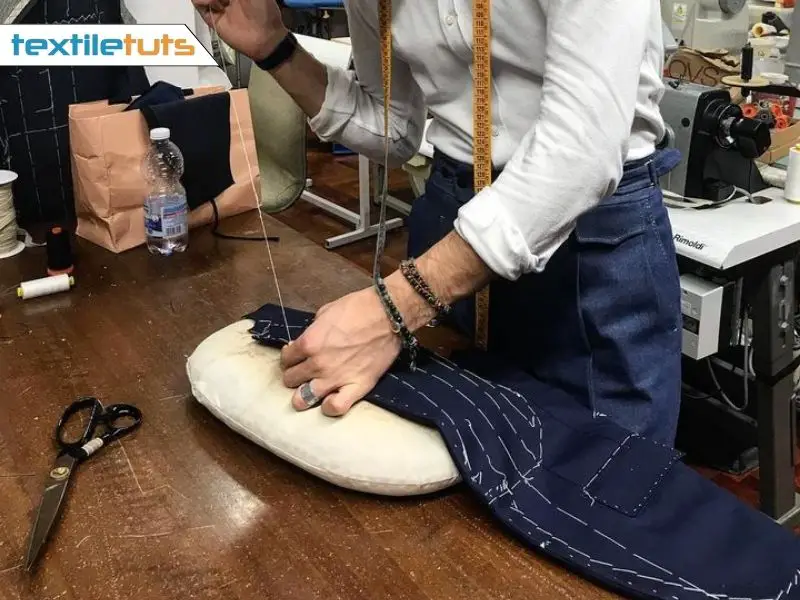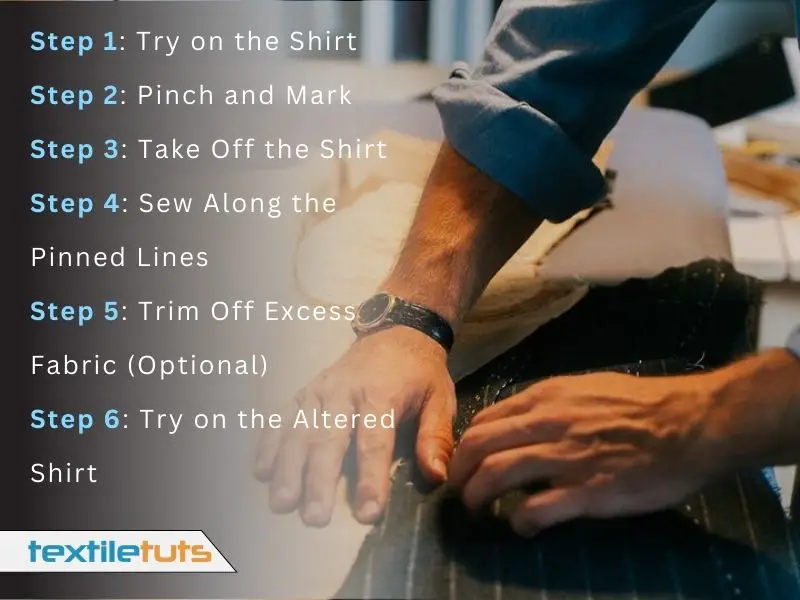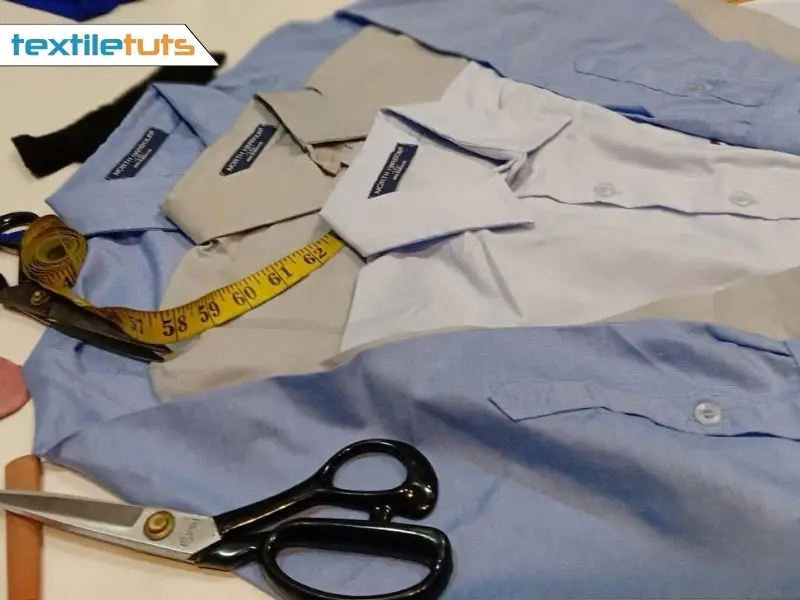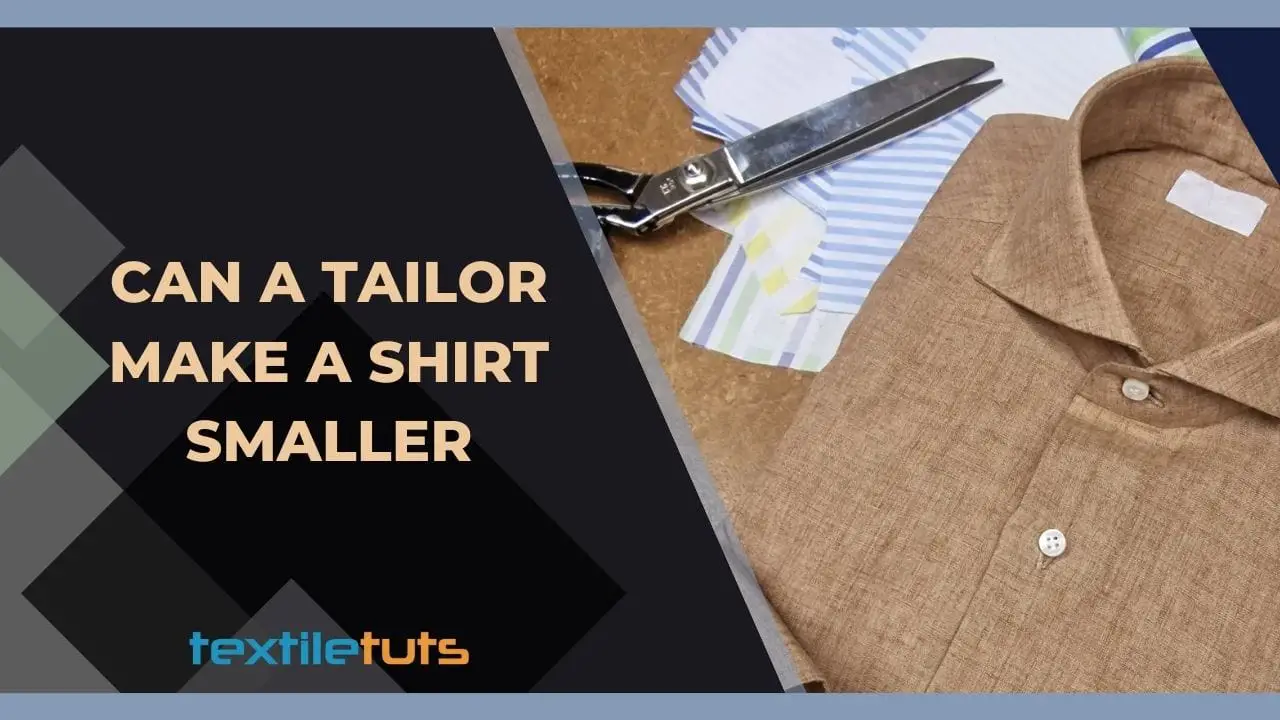Can A Tailor Make A Shirt Smaller: Way To A Flattering Fit
Tailoring can be a lifesaver for clothing that doesn’t fit right off the rack. From hemming pants to taking in a dress, a skilled tailor can make adjustments that transform how a garment looks and feels. Many wonder if a tailor can make a shirt smaller and how it’s done.
Any skilled tailor can make a shirt smaller, but the extent to which they can alter it depends on the original size and fabric of the shirt. Also, not all shirts can be made smaller. Some shirts are made with specific materials or designs that make it difficult to alter the size.
Additionally, the amount of fabric that can be taken in depends on the original size of the shirt. If the shirt is already too small, there may not be enough fabric to work with.
Here, I will explore the process of making a shirt smaller and the factors that come into play. Also, you will learn about common mistakes during the alteration process and how much you need to spend.
Is It Possible for a Tailor to Reduce the Size of a Shirt?
Yes, it is possible for a tailor to reduce the size of a shirt. Tailors are skilled professionals who specialize in altering, repairing, and tailoring garments to fit the wearer’s body.

To reduce the size of a shirt, a tailor may use techniques such as taking in the seams, adjusting the shoulder width, and shortening the length of the sleeves or body, depending on the shirt type.
The tailor will carefully measure the client’s body and identify the areas that must be altered to achieve the desired fit. They will then use their expertise and precision to create a perfectly fitting shirt that flatters the client’s body.
I want to let you know that not all shirts can be easily reduced in size. The type of fabric and the shirt’s construction can impact the tailor’s ability to make alterations. For example, shirts made from stretchy or delicate fabrics may require more care and attention than shirts made from sturdier materials.
Additionally, the shirt’s design may limit the amount of alteration that can be done without compromising the overall look and structure of the garment.
Therefore, it is recommended to consult with a professional tailor to determine the best course of action for reducing the size of a shirt.
DIY Solutions for Making a Shirt Smaller
Making a shirt smaller at home without going to a tailor can be done using a few simple steps. Please note that these DIY solutions are best suited for casual shirts and may not provide precise results as professional tailoring.

Here’s a step-by-step guide to making a shirt smaller:
Materials You’ll Need
Try on the Shirt
Put on the shirt and assess how much smaller you want it to be. Identify the areas where the excess fabric needs to be removed, such as the sides, sleeves, and shoulders.
Pinch and Mark
Use pins to pinch the excess fabric along the side seams and sleeves to achieve the desired fit. Be careful not to prick yourself. You can also use chalk or fabric marker to mark the areas that need adjustment.
Take Off the Shirt
Carefully remove the shirt while keeping the pins in place. Lay it flat on a table or surface.
Sew Along the Pinned Lines
Using a sewing machine or hand stitching, sew along the pinned lines to remove the excess fabric. Make sure to sew a straight and secure seam. If using a sewing machine, backstitch at the beginning and end of the seam to reinforce it.
Trim Off Excess Fabric (Optional)
If the excess fabric is significant, trim it off with scissors, leaving a seam allowance of about ¼ inch (0.6 cm) to prevent fraying.
Try on the Altered Shirt
Put the shirt back on to check the fit. Make any additional adjustments if necessary.
Common Mistakes to Avoid When Tailoring a Shirt Smaller
When tailoring a shirt smaller, there are some common mistakes that you should avoid to ensure you achieve the best results. Making these mistakes can lead to an ill-fitting or damaged shirt. Here are some key pitfalls to watch out for:
Taking in too Much Fabric at Once
Making gradual adjustments when taking in a shirt is essential to avoid making it too tight. Start with small alterations and check the fit after each adjustment to prevent overdoing it.
Not Measuring Properly
Accurate measurements are crucial when tailoring a shirt. Take precise measurements of the areas you want to adjust, such as the sides, sleeves, and shoulders. Incorrect measurements can lead to uneven or lopsided alterations.
You may find our shirt fabric consumption calculator pretty helpful. There we have explained how to take the measurements correctly.
Ignoring the Fabric Type
Different fabrics behave differently when altered. Some fabrics have more stretch and forgiveness, while others may be prone to fraying or puckering. Consider the fabric type and adjust your tailoring techniques accordingly.
Skipping the Test Fit
Always try the shirt on during tailoring to ensure the fit turns out as desired. Skipping the test fit can lead to irreversible mistakes.
Not Checking Symmetry
When taking in the sides or shoulders, ensure the adjustments are symmetrical on both sides of the shirt. Uneven alterations can result in an unbalanced look.
Neglecting the Shirt’s Design Elements
Some shirts have unique design elements like patterns, prints, or pockets that should be considered during tailoring. Altering these areas without careful planning can disrupt the shirt’s original aesthetic.
Forgetting about the armholes
When adjusting the sides or sleeves, also pay attention to the armholes. Taking in the sides without adjusting the armholes can result in a restricted range of motion.
Using the wrong type of stitching
Select the appropriate type of stitching for the fabric and the alterations you’re making. Using the wrong stitches can weaken the shirt or cause it to fray.
Not reinforcing the seams
When taking in a shirt, reinforce the seams with backstitches or lock stitches to prevent them from unraveling during wear and washing.
Rushing the process
Tailoring takes time and precision. Rushing through the process can lead to mistakes and unsatisfactory results. Take your time and work carefully.
Cost and Time Considerations for Tailoring a Shirt
The cost and time considerations for tailoring a shirt can vary depending on several factors, including the complexity of the alterations, the tailor’s expertise, your location, and the shirt’s fabric. Here are some general guidelines:

Cost Considerations
- Type and Number of Alterations: The more alterations needed, the higher the cost. Taking in the sides, shortening sleeves, and adjusting the shoulders are common alterations that may be required to make a shirt smaller.
- Fabric Type: Some fabrics are more challenging to work with, which can affect the cost. Delicate or intricate fabrics may require more time and skill, thus increasing the price.
- Tailor’s Experience and Reputation: Experienced and skilled tailors may charge higher fees due to their expertise and reputation for delivering high-quality results.
- Geographical Location: Tailoring costs can vary based on the cost of living in your area. Tailors in larger cities or upscale neighborhoods may charge more than those in smaller towns.
Time Considerations
- Complexity of Alterations: The required time will depend on the complexity of the alterations. Simple adjustments may be completed quickly, while more intricate alterations may take longer.
- Tailor’s Workload: If the tailor has a busy schedule with other clients, it may take longer to get your shirt altered.
- Communication and Fittings: Additional time for fittings and communication with the tailor to ensure the alterations meet your expectations.
Average Costs and Timeframes
Below is the information detailing the cost and time required for the shirt alteration process, giving you a clear idea of the cost estimation.
| Type of Alteration | Cost | Time |
|---|---|---|
| Shortening sleeves | $10-20 | 30 minutes |
| Lengthening sleeves | $15-30 | 1 hour |
| Narrowing or widening the body | $20-40 | 1 hour |
| Taking in or letting out the waist | $20-40 | 1 hour |
| Hemming the bottom | $10-20 | 30 minutes |
| Adding or removing buttons | $5-10 | 15 minutes |
| Changing the collar | $20-40 | 1 hour |
Can a Tailor Alter Clothing to Achieve the Perfect Fit?
Yes, tailors can make bigger pants to achieve the perfect fit. Whether it’s letting the waist out, lengthening the hems, or adjusting the shoulders, a skilled tailor can work wonders. With their expertise, they can transform ill-fitting clothing into garments that look and feel custom-made for you.
Final Words
A skilled tailor can make a shirt smaller, provided the required alterations are within reason. However, it is essential to consider the existing fit of the shirt and the amount of material available for alterations.
It is always recommended to consult a professional tailor to find the best course of action for the best fit. A well-fitted shirt can help enhance one’s appearance and confidence, so it is worth investing in good tailoring services to achieve the perfect fit.

